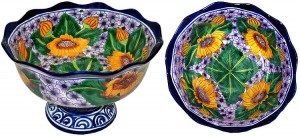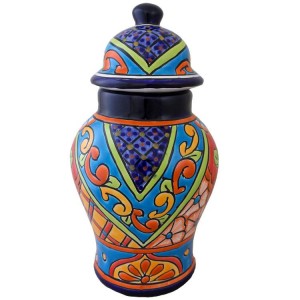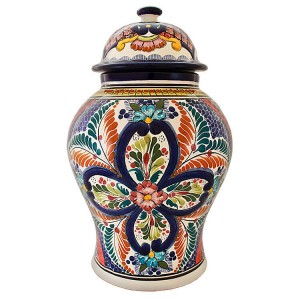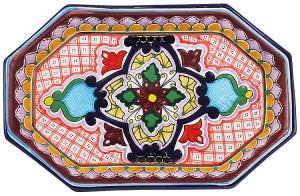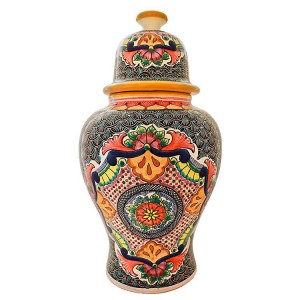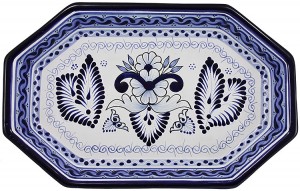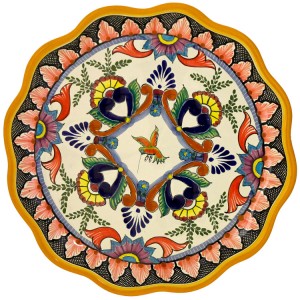 In the early 20th century, interest developed in collecting the work. In 1904, an American by the name of Emily Johnston de Forrest discovered Talavera on a trip to Mexico. She became interested in collecting the works, so she consulted scholars, local collectors and dealers. Eventually, her collection became the base of what is currently exhibited in the Metropolitan Museum of Art in New York. Her enthusiasm was passed onto Edwin Atlee Barber, the curator of the Pennsylvania Museum of Art. He, too, spent time in Mexico and introduced Talavera into the Pennsylvania museum’s collection. He studied the major stylistic periods and how to distinguish the best examples, publishing a guide in 1908 which is still considered authoritative.
In the early 20th century, interest developed in collecting the work. In 1904, an American by the name of Emily Johnston de Forrest discovered Talavera on a trip to Mexico. She became interested in collecting the works, so she consulted scholars, local collectors and dealers. Eventually, her collection became the base of what is currently exhibited in the Metropolitan Museum of Art in New York. Her enthusiasm was passed onto Edwin Atlee Barber, the curator of the Pennsylvania Museum of Art. He, too, spent time in Mexico and introduced Talavera into the Pennsylvania museum’s collection. He studied the major stylistic periods and how to distinguish the best examples, publishing a guide in 1908 which is still considered authoritative.
During this time period, important museum collections were being assembled in Mexico as well. One of the earliest and most important was the collection of Francisco Perez Salazer in Mexico City. A bit later, in the 1920s, Franz Mayer, a German-born stockbroker, started his collection. In Puebla, he was considered a bit crazy for buying all of the “old stuff” from the locals. In 1986, the Franz Mayer Museum opened in Mexico City with the largest collection of Talavera Poblana in the world – 726 pieces from the 17th through the 19th century, and some 20th-century pieces by Enrique Luis Ventosa. In Puebla, José Luis Bello y González and his son José Mariano Bello y Acedo sought the advice of Ventosa in starting their collection. They amassed the largest and most important collection in the city which now is housed in the José Luis Bello y González Museum (Bello Museum).
More recently, the Museo de la Talavera (Talavera Museum) has been established in the city of Puebla, with an initial collection of 400 pieces. The museum is dedicated to recounting the origins, history, expansions and variations in the craft. Pieces include some of the simplest and most complex, as well as those representing different eras.

